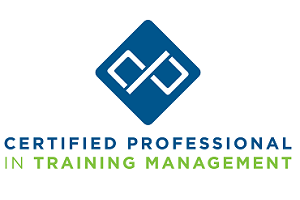Editor’s note: As we ended a difficult and unique year and entered a new one, the Training Industry editorial team asked learning leaders to write in with their reflections on 2020 and predictions for 2021. This series, “What’s Changed and What Hasn’t?: Taking Stock of 2020 and Planning for 2021,” is the result. Plus, don’t miss our infographic, “5 Tips for Turning 2020 Disarray Into 2021 Direction: Insights From Learning Leaders,” which shares insights from the series.
Thanks to COVID-19, the number of people working remotely in Europe has roughly doubled, and in some countries, almost 60% were working remotely as of April 2020. Where employees do work on site, they have less face-to-face interactions, so many are effectively operating as if they are working remotely.
Considering that in 2018, before the pandemic, 68% of employees worked remotely at least once per month, it is hard to believe that remote working will not be here for the long term. As a result, learning and development (L&D) professionals must ask themselves a question: What role should L&D play to leverage its expertise going forward?
This shift to more remote working has brought a range of benefits and downsides. While it can mean better work-life balance and greater physical health protections, studies have shown that it can negatively impact collaboration, decision-making, creativity, engagement, work enjoyment and mental health.
Employees now have to juggle many challenges, including:
-
- Learning new policies and processes (e.g., security policies, illness policies, recruitment procedures and remote performance management).
- Learning to use new technologies.
- Remote leadership.
- Staying up to date on company information.
- Feeling part of a team and included in the company.
- Maintaining internal and external relationships and networking to develop new ones.
… all this while being awash with information overload, worries outside of work, and the need to keep learning and development ongoing!
Who Will Help Employees With These Struggles?
While some savvy companies are putting in place new roles (such as “head of remote working”), for the time being, overcoming these challenges is a patchwork of efforts by the human resources (HR) team, the information technology (IT) team, change teams, team managers and senior leaders. More often than not, the solutions put in place are created in the moment, in siloes, and many areas fall through the gaps.
For example, how many companies have created internal networking programs to increase the development of weak ties (the loose acquaintances and chance encounters that can create new opportunities) when everyone is working from home? There is a gap there, and arguably, the best people to take the initiative in filling are the L&D team.
Why L&D Is Well Suited for This Task
As a result of the pandemic, classic L&D operations have taken a severe hit, with 50% to 100% of in-person training programs postponed or cancelled as of early March. While some of these programs are coming back, the appetite for traditional training courses is reduced for the time being, creating an opportunity for L&D to pivot its experience and creativity.
Unsurprisingly the bad meeting and management habits that existed in the face-to-face workplace still exist in the remote workplace. If anything, they’re amplified. Therefore, training employees in how to communicate, run meetings, make decisions and manage others from behind a computer screen is crucial. Even more, virtual teams must learn to be more collaborative, more creative and more inclusive. Someone must take the lead in establishing and rolling out best practice in these areas — a job that’s perfect for L&D.
What Else Can L&D Do to Help?
Companies are innovating in other ways to improve the virtual workplace, including offering:
-
- Virtual escape rooms and other online games for team bonding.
- Virtual offices, where employees can work together for added motivation and jump into an ad hoc breakout rooms with a teammate.
- Internal networking virtual coffees.
- Virtual “watercoolers” and social clubs.
Employee mental health is another important area that requires a special focus in the remote workplace. In addition to new policies and helplines, many organizations have advocated the adoption of mindfulness and stress-busting activities as well as virtual exercise sessions.
Bringing great thinkers in these areas, the L&D team can ensure that these new opportunities are well set up, well run, offered across the company, and aligned to company culture and other L&D activities.
The workplace is always evolving, but the COVID-19 pandemic has created an accelerated shift in how we work. In response, all parts of the business must make a shift of the same order of magnitude in how they function. With their capabilities and capacity, a strong argument can be made that now is the time for L&D to pivot and be the glue that makes organizations more effective in 2021.


